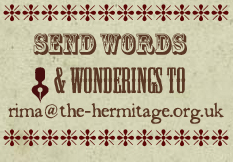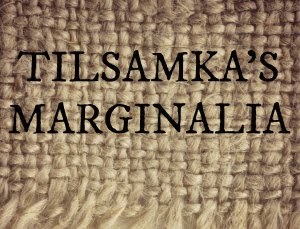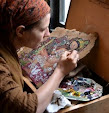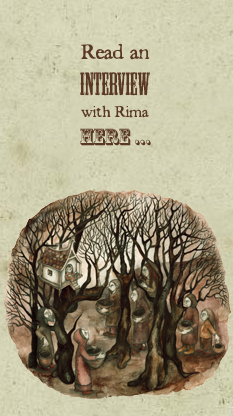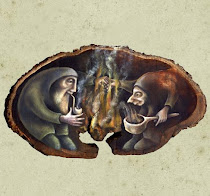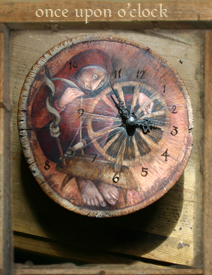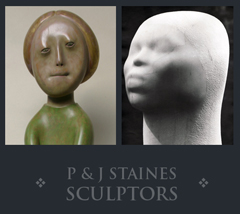
Wednesday, 22 December 2010
White-Ivied

Written by
Rima Staines
at
10:59 pm
48
words from others
![]()
Thursday, 9 December 2010
Hermitage Bazaar

SNOWS HAVE COME AND GONE, ours the least whitened corner of all the white white country. Perhaps they'll come again (and I'll show you snow soon), but in the meanwhile I am busy in this warm nest of ours brewing a wintry painting and scheming schemes for keeping the wolves from the door.
Last weekend we had a pre-Christmas art market in the village hall. Here's my stall above - a table-and-clothes-horse affair all ivied and teetering with pictures. For stall-neighbours I had friends and artists Danielle Barlow, Virginia Lee, David Wyatt & Jason of England with their fine wares. And my two paintings for the Shared Legends project have come to England along with all the others and are on show til the 18th December at Rougemont Castle in Exeter. Here's the flyer with details. Do come along if you are nearby.
As the year wears on, I find myself a little workswept and crosseyed with Things To Do. Where on earth do the weeks go? Soon after lunchtime, the sun seems to go down again, and another day shuffles off to hide under the bedclothes. My Once Upon O'Clock order list grows longer, and as ever I struggle to find time to fulfil jobs like these where reimbursement is rather on the low side compared to the hours required to create. I have decided to stop taking any more orders for the time being until I can nibble a good way into the snaking list. Then, when I am open again for orders, the price may have to hoik a little. I am torn between keeping these clocks affordable for folks and making the enterprise a worthwhile one for me. I find that in all dealings it is best if the energy exchange is in balance, be the variables goods, money, time or favours. When the balance is off kilter one or other starts to feel drained or overloaded, and I don't want this to happen in my work. Worrying about money always pinches the creative flow. It is mighty hard to feel inspired whilst thinking about paying the gas bill. However, I continue to take on jobs where the payment isn't nearly enough, but the reward is great in terms of joy in the making, or forging connection for future possible projects.
So I have been thinking (prompted again by a recent blog commenter two posts ago) about the possibility of creating a little piggybank here which could help cushion things for me. It often surprises others that I am living pretty much hand to mouth, and I wonder whether this has just become a way for me, something I have stopped questioning. I never imagine not being poor, and mostly it's OK, I eat good food and am warm and happy. But the one thing that having enough would mean, would be a release from the brow-furrowing money anxiety that is such an every day exhaustion for those on low incomes. How I go about this is a winding path in itself, and one which I hope I am already a way along. Perhaps one day I'll be a proper illustrator, with books in book shops, perhaps one day when people ask me if I have illustrated books I'll be able to say yes! I am aware too that my head is much better made for thinking up stories than account sheets, so perhaps a worldly clip round the ear is needed in the hope of getting myself more business-minded?
Meanwhile it strikes me that many many of you love what you find here at this blog, enjoy reading the words I write and getting lost in the worlds I paint. I am pleasantly baffled at the kind emails I receive from the world over, still quite amazed that people like what I do so very much. So I thought, if each person who visits and finds conjured inside them a smile or a Good Thing, and who feels like it, drops a coin into my hat over there on the sidebar -> it might actually help. And I'm all for these crowd-sourcing web-wide threads of support that we see knotting themselves all over the cyberplace too. It would really make a difference. Thank you.
And now to more winter calls of "Roll Up": I've been looking through old suitcases of work, and found some paintings which I thought folks might like to buy. I sell originals usually because I need the coinage, and occasionally regret selling a favourite. But here are three strange offerings, photographed by evening desklamp for you to snap up, or peruse.
The first is one I've never shown you, because I wasn't sure about it when I painted it, but now I'm fonder of it than I was. It was painted about 3 years ago in oils on cardboard and is slightly different from my other work. It's scrubbier in its paint surface and there are little pieces of text torn from an old map scattered in the girl's hair. She holds the hoof of a strange wheeled beast, and what it all is about I cannot tell you. It measures 12 1/2" x 13 1/2", will cost you £400 and is called "Edges of This" :












The third is a softer wash of a painting, painted in 2008 too in watercolour and pencil. An old man and a young girl form part of this greenish dream, and a staircase winds up into her hair. The paper on which it is painted measures approx 13" by 13" and the painting will cost you £400.
"There's A Stair in Her Hair" he said :

Now if anybody would like to buy any of these paintings in the next week or so, just drop me an email. After that I'll be listing them on etsy with slightly higher prices to account for the shop fees.
And that hat'll stay over there for passersby to fill with gold. Let no-one feel a pressure to contribute, but if you should feel inclined, maybe now's a good time.. before paypal and the rest of the internet implodes and we are returned to distributing pamphlets on the streets and selling paintings and tales at crossroads. ;)
THANK YOU ONE & ALL!
Written by
Rima Staines
at
8:00 pm
39
words from others
![]()
Tags: donation, making a living, market, money, painting, poverty, sale
Wednesday, 24 November 2010
Marvels and Tales
{EDIT : Prints for sale in the shop now! Large and small, roll up, roll up! }
Written by
Rima Staines
at
9:09 pm
45
words from others
![]()
Tags: baba yaga, drawing, fairy tales, fly agaric, forest, hansel and gretel, magic, marvels and tales, old women, red riding hood, shamanism
Wednesday, 17 November 2010
Ventriloquism














Written by
Rima Staines
at
12:22 pm
60
words from others
![]()
Tags: book cover, catherynne m valente, fairy tales, lullaby, russian folklore, stories, surrealism, ventriloquism, watercolour
Tuesday, 2 November 2010
The Rootpond Clock & Considerations on Artistic Conversation









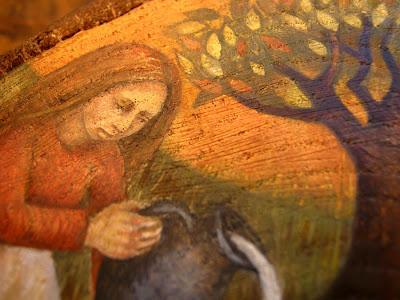
Written by
Rima Staines
at
1:05 pm
184
words from others
![]()
Tags: animals, autumn, blogging, clock, clockmaking, commissions, community, confidence, conversation, crossing paths, feedback, oil painting, once upon o'clock, painting anguish, selling artwork




